GEOGRAPHIES OF
THE HOLOCAUST

THE SPATIAL HUMANITIES
David J. Bodenhamer
John Corrigan
Trevor M. Harris
editors
Locating the Moving Image:
New Approaches to Film and Place
Edited by Julia Hallam and Les Roberts
The Spatial Humanities: GIS and the
Future of Humanities Scholarship
Edited by David J. Bodenhamer,
John Corrigan, and Trevor M. Harris
Toward Spatial Humanities:
Historical GIS and Spatial History
Edited by Ian N. Gregory
and Alistair Geddes
Troubled Geographies: A Spatial History
of Religion and Society in Ireland
Ian N. Gregory, Niall A. Cunningham,
C. D. Lloyd, Ian G. Shuttleworth,
and Paul S. Ell
GEOGRAPHIES OF
THE HOLOCAUST
Edited by ANNE KELLY KNOWLES TIM COLE ALBERTO GIORDANO
Cover and chapter-opening graphics by Erik B. Steiner

This book is a publication of
INDIANA UNIVERSITY PRESS
Office of Scholarly Publishing
Herman B Wells Library 350
1320 East Tenth Street
Bloomington, Indiana 47405 USA
iupress.indiana.edu
Telephone 800-842-6796
Fax 812-855-7931
2014 by Indiana University Press
All rights reserved
No part of this book may be reproduced or utilized in any form or by any means, electronic or mechanical, including photocopying and recording, or by any information storage and retrieval system, without permission in writing from the publisher. The Association of American University Presses Resolution on Permissions constitutes the only exception to this prohibition.
 The paper used in this publication meets the minimum requirements of the American National Standard for Information SciencesPermanence of Paper for Printed Library Materials, ANSI Z39.481992.
The paper used in this publication meets the minimum requirements of the American National Standard for Information SciencesPermanence of Paper for Printed Library Materials, ANSI Z39.481992.
Manufactured in Korea
Library of Congress
Cataloging-in-Publication Data
Geographies of the Holocaust / edited by Anne Kelly Knowles, Tim Cole, and Alberto Giordano.
pages cm.(The spatial humanities)
ISBN 978-0-253-01211-1 (hard-back)ISBN 978-0-253-01231-9 (eb) 1. Holocaust, Jewish (19391945)HistoryCase studies. 2. Historical geographyEuropeCase studies. 3. World War, 19391945AtrocitiesCase studies. I. Knowles, Anne Kelly, editor of compilation.
D804.348.G46 2014
940.5318dc23
2013046355
1 2 3 4 5 19 18 17 16 15 14
For our families
Contents
Alberto Giordano, Anne Kelly Knowles, and Tim Cole
Anne Kelly Knowles and Paul B. Jaskot, with Benjamin Perry Blackshear, Michael De Groot, and Alexander Yule
Alberto Giordano and Anna Holian
Waitman Wade Beorn, with Anne Kelly Knowles
Tim Cole and Alberto Giordano
Paul B. Jaskot, Anne Kelly Knowles, and Chester Harvey, with Benjamin Perry Blackshear
Simone Gigliotti, Marc J. Masurovsky, and Erik B. Steiner
Paul B. Jaskot and Tim Cole
Acknowledgments
We owe much to a number of people at the Center for Advanced Holocaust Studies at the United States Holocaust Memorial Museum, particularly Robert Ehrenreich, Director of University Programs, and Michael Haley Goldman, Director of Global Classroom and Evaluation. Center staff facilitated our meetings at the Museumstarting with the 2007 summer research workshop that brought us together for the first timeand they provided data and critical feedback and made us feel welcome. Vital funding for this project was provided by National Science Foundation Award nos. 0820487 and 0820501. At NSF, we thank in particular program officers Tom Baerwald and Antoinette Winklerprins for their patient assistance and for their support for an unusual interdisciplinary project that stretched the bounds of GIScience.
Each of us has benefited from the support of our home institutions in various ways since we began working together. We would like to thank especially the Geography Department at Texas State University, in particular Phil Suckling, Chair of the department (20052013), for his strong support, and Jessica Schneider, who administered the NSF grant. At Middlebury College, Franci Farnsworth helped Anne navigate federal funding, and department coordinators Ann McLean and Susan Perkins made things run smoothly. Our work has also been supported by individual research and travel grants from Texas State University; Middlebury College; DePaul University College of Liberal Arts and Social Sciences; Victoria University, Wellington; and the University of Bristol. Funding for publishing in full color was generously provided by the Stanford Spatial History Lab; the Department of Geography at Texas State University; and Middlebury College. Funding for the index and cover design was provided by the DePaul University Research Council.
Scholars at the annual conferences of Lessons and Legacies, the Social Science History Association, the Association of American Geographers, and the American Historical Association have offered extremely helpful comments and criticisms on our work as it developed. Each of our projects benefited as well from responses to our presentations at various universities and other institutions. Our students contributed to this project by honing our thinking about what it means to study the geographies of the Holocaust and how we can most effectively convey what we have learned in this project. Thanks to all the staff at Indiana University Press, particularly project manager Darja Malcolm-Clarke, copy editor Annette Wenda, designer Jamison Cockerham, Assistant Sponsoring Editor Jenna Lynn Whittaker, and Editor-in-Chief Robert Sloan. We also thank the two anonymous reviewers for Indiana University Press for their critiques.
Finally, we thank our partners, spouses, children, and all the friends who have shared our excitement and endured our absence while this project was taking shape. Scholarship is never a solitary venture; it cant be done without the love and support of those who know us best. To all of them, our deepest thanks.
GEOGRAPHIES OF
THE HOLOCAUST
Geographies of the Holocaust
Alberto Giordano, Anne Kelly Knowles, and Tim Cole
THE HOLOCAUST DESTROYED COMMUNITIES, DISPLACED millions of people from their homes, and created new kinds of places where prisoners were concentrated, exploited as labor, and put to death in service of the Third Reichs goal to create a racially pure German empire. We see the Holocaust as a profoundly geographical phenomenon, though few scholars have analyzed it from that perspective.methods to investigate even the most familiar subjects in the history of the Holocaust.
At its most fundamental, a geographical approach to the Holocaust starts with questions of where. Print atlases of the Holocaust, for example, have focused on the location of major concentration camps and Jewish ghettos, the routes of train lines used to transport prisoners to the camps, and the journeys of individual survivors, such as Primo Levis path as he sought his way home after being liberated from Auschwitz. Other examples include maps of where people were arrested, where they were sent, where they were murdered. The facts of location are basic to understanding any historical event. In the case of the Holocaust, such facts are exceedingly voluminous, because the Nazis kept detailed records of their operations and because many people who were caught up in the events as victims or bystanders recorded where their experiences took place.
Next page

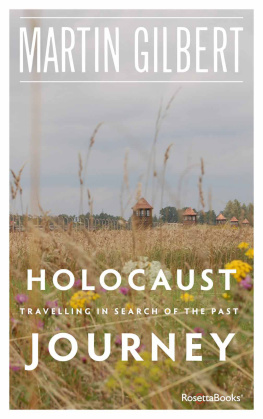
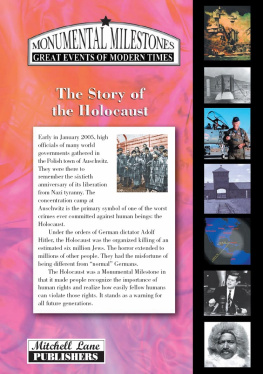
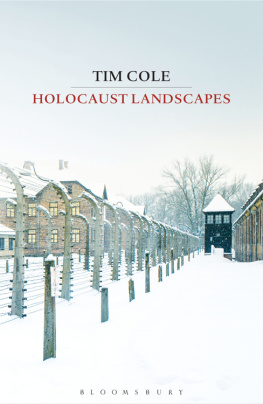
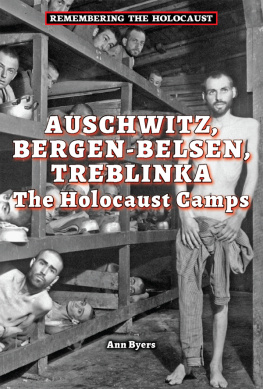
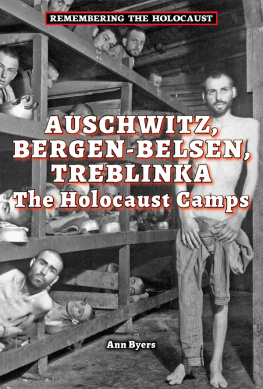




 The paper used in this publication meets the minimum requirements of the American National Standard for Information SciencesPermanence of Paper for Printed Library Materials, ANSI Z39.481992.
The paper used in this publication meets the minimum requirements of the American National Standard for Information SciencesPermanence of Paper for Printed Library Materials, ANSI Z39.481992.